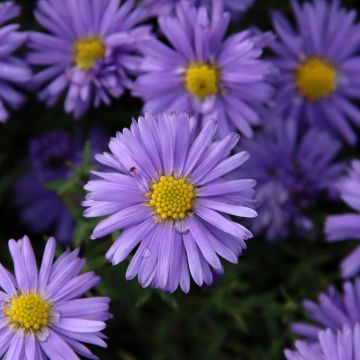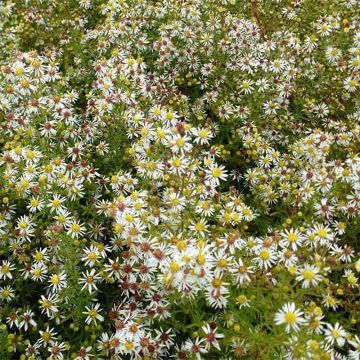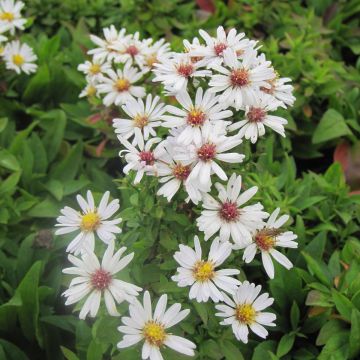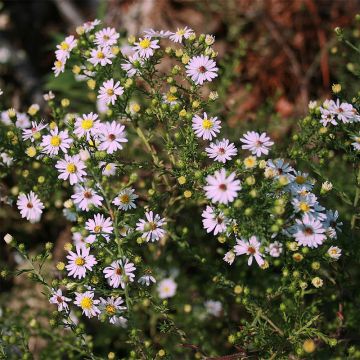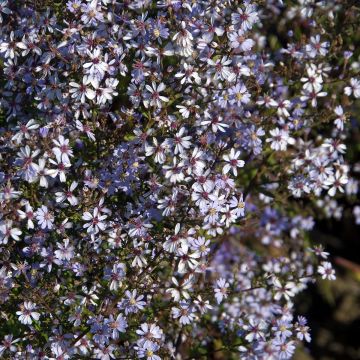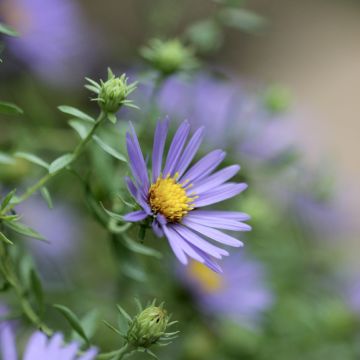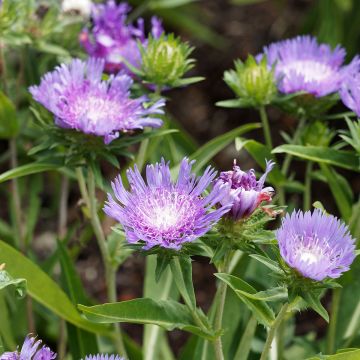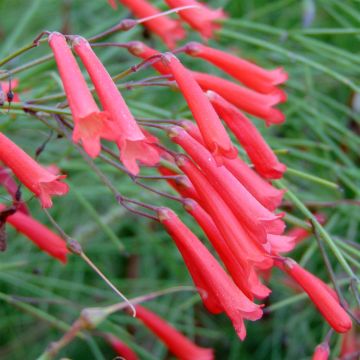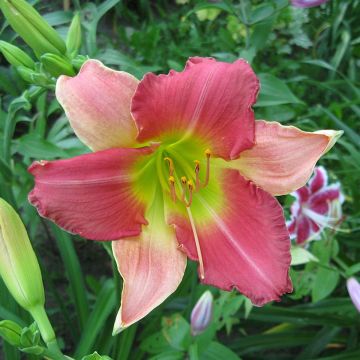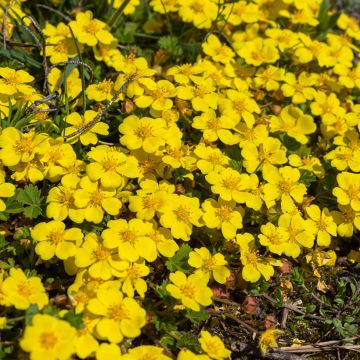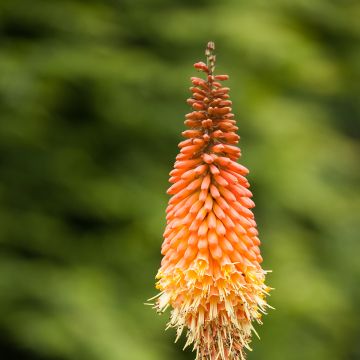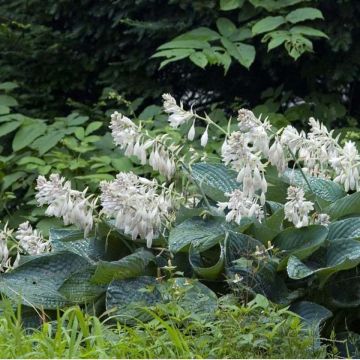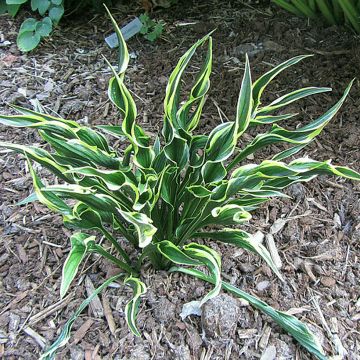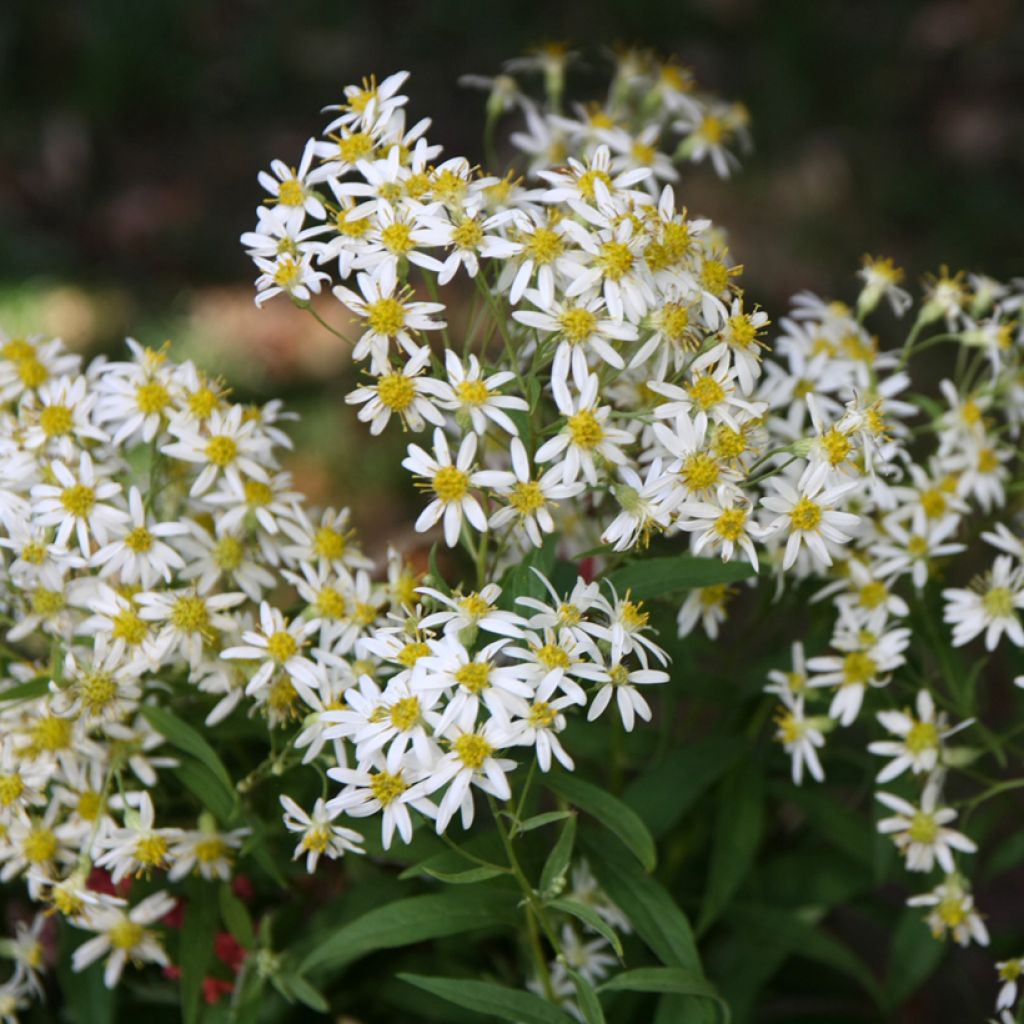

Aster umbellatus Weisser Schirm
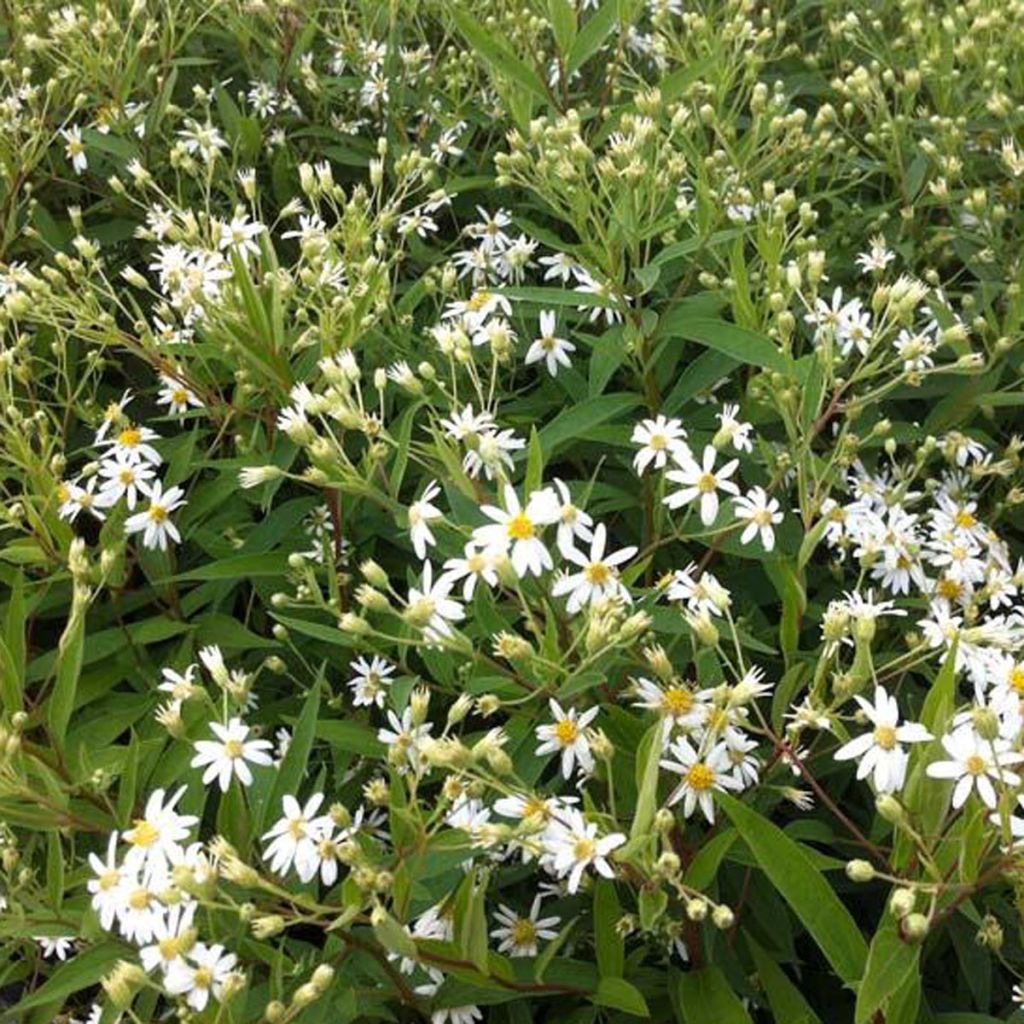

Aster umbellatus Weisser Schirm
Aster umbellatus Weisser Schirm
Aster umbellatus Weisser Schirm
Michaelmas daisy
This item cannot be shipped to the selected country
Delivery charge from €5.90
Delivery to Corse prohibited
More information
Schedule delivery date,
and select date in basket
This plant carries a 12 months recovery warranty
More information
We guarantee the quality of our plants for a full growing cycle, and will replace at our expense any plant that fails to recover under normal climatic and planting conditions.
From €5.90 for pickup delivery and €6.90 for home delivery
Express home delivery from €8.90.
Delivery to Corse prohibited: UE law prohibits the import of this plant from mainland France to Corse as part of the fight against Xylella fastidiosa. Please accept our sincere apologies.
More information
Does this plant fit my garden?
Set up your Plantfit profile →
Description
Aster umbellatus 'Weisser Schirm', also known as Umbellate Aster, is a robust perennial that has retained the simplicity and generosity of wild plants. Covered with small white daisies with yellow hearts arranged in umbels throughout the summer, this bristly plant with purple stems sometimes reaches the size of a bush. It is a useful plant for natural areas or the back of flower beds, in moist soil.
Aster umbellatus belongs to the Asteraceae family. It is native to wet areas in the eastern United States. This perennial has a compact, upright and bushy habit. 'Weisser Schirm' is an improvement of this plant. It will reach a minimum height of 1.50 m (5ft) when in bloom, sometimes more than 2 m (7ft) under optimal growing conditions, and will rapidly spread over 60 cm (24in).
The airy flowering brings joy to bees and butterflies from July to September. When it blooms, only the leaves on the stems persist. The stems are purple, branched at the top and bear flowers grouped in umbels (hence the name of the plant) that can reach 20 cm (8in) in width. The flower heads consist of about ten white flowers on the periphery, with yellow central flowers. Each flower is replaced by a seed crowned with a tuft of tawny bristles, which makes it decorative in winter. The deciduous foliage is medium green. The basal leaves are wider, with smooth or dentate edges, while the leaves on the stems are long, slender, and lanceolate. This perennial is an important host plant in the life cycle of certain butterflies, such as the pearl crescent and the silver-bordered fritillary.
It is impossible to imagine our garden without asters in its beds or borders. This one is particularly suitable for moist soil and will be magnificent near water features. It pairs well with other tall, slightly wild plants such as fennel, meadow rues, angelica, and Buenos Aires verbena.
Report an error about the product description
Aster umbellatus Weisser Schirm in pictures
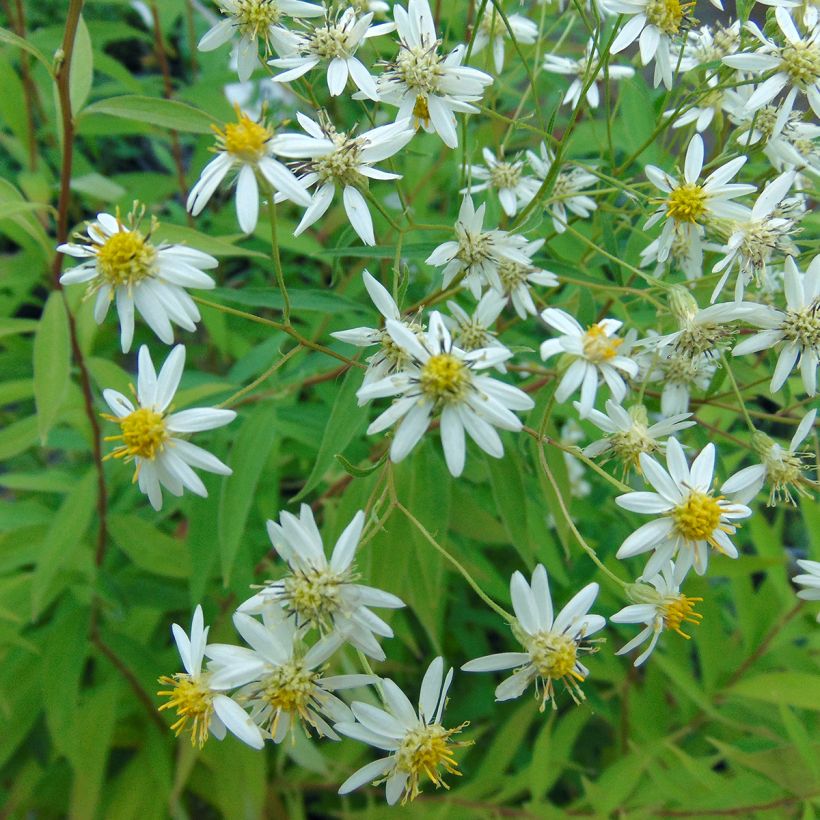

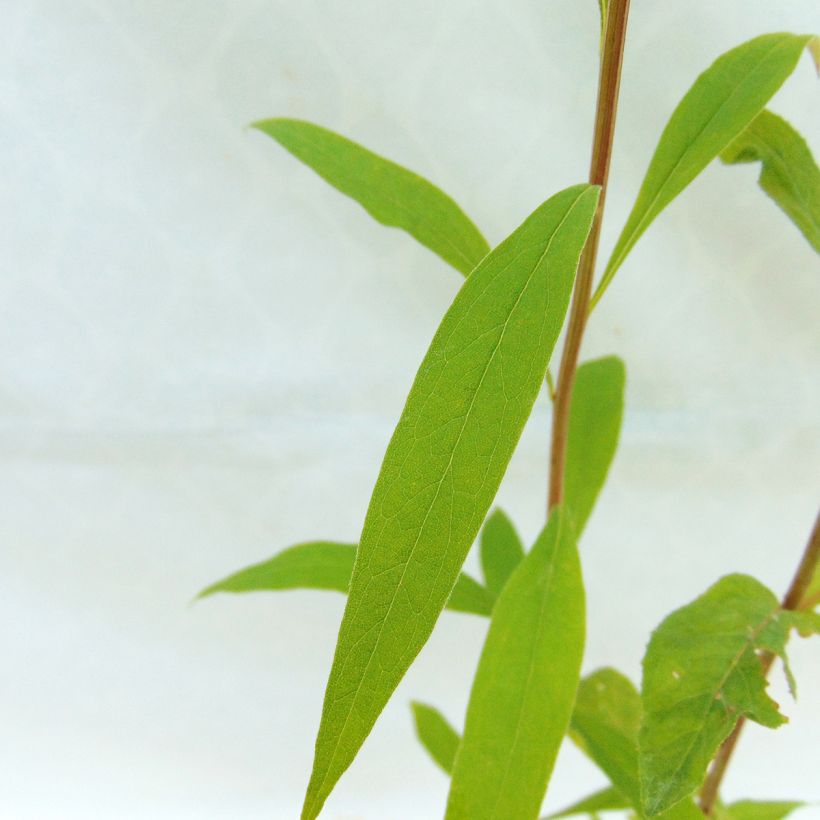

Flowering
Foliage
Plant habit
Botanical data
Aster
umbellatus
Weisser Schirm
Asteraceae
Michaelmas daisy
Cultivar or hybrid
Other Asters
Planting and care
Plant Aster umbellatus 'Weisser Schirm' in autumn or spring in a humus-bearing, well-worked, moisture-retentive, neutral soil. It enjoys a sunny exposure but can tolerate partial shade where it will have a slightly looser habit. It is important to avoid strong winds that could flatten it. Once established, it is best not to move it as it will not appreciate this. In a border, maintain a spacing of at least 50 cm (20in) between plants. Mulch the soil from June onwards and water during heatwaves. Aster umbellatus is not susceptible to powdery mildew. In April-May, it may be useful to pinch the stems to limit the height. Remove dried stems at the end of flowering.
Planting period
Intended location
Care
-
, onOrder confirmed
Reply from on Promesse de fleurs
Summer flowering perennials
Haven't found what you were looking for?
Hardiness is the lowest winter temperature a plant can endure without suffering serious damage or even dying. However, hardiness is affected by location (a sheltered area, such as a patio), protection (winter cover) and soil type (hardiness is improved by well-drained soil).

Photo Sharing Terms & Conditions
In order to encourage gardeners to interact and share their experiences, Promesse de fleurs offers various media enabling content to be uploaded onto its Site - in particular via the ‘Photo sharing’ module.
The User agrees to refrain from:
- Posting any content that is illegal, prejudicial, insulting, racist, inciteful to hatred, revisionist, contrary to public decency, that infringes on privacy or on the privacy rights of third parties, in particular the publicity rights of persons and goods, intellectual property rights, or the right to privacy.
- Submitting content on behalf of a third party;
- Impersonate the identity of a third party and/or publish any personal information about a third party;
In general, the User undertakes to refrain from any unethical behaviour.
All Content (in particular text, comments, files, images, photos, videos, creative works, etc.), which may be subject to property or intellectual property rights, image or other private rights, shall remain the property of the User, subject to the limited rights granted by the terms of the licence granted by Promesse de fleurs as stated below. Users are at liberty to publish or not to publish such Content on the Site, notably via the ‘Photo Sharing’ facility, and accept that this Content shall be made public and freely accessible, notably on the Internet.
Users further acknowledge, undertake to have ,and guarantee that they hold all necessary rights and permissions to publish such material on the Site, in particular with regard to the legislation in force pertaining to any privacy, property, intellectual property, image, or contractual rights, or rights of any other nature. By publishing such Content on the Site, Users acknowledge accepting full liability as publishers of the Content within the meaning of the law, and grant Promesse de fleurs, free of charge, an inclusive, worldwide licence for the said Content for the entire duration of its publication, including all reproduction, representation, up/downloading, displaying, performing, transmission, and storage rights.
Users also grant permission for their name to be linked to the Content and accept that this link may not always be made available.
By engaging in posting material, Users consent to their Content becoming automatically accessible on the Internet, in particular on other sites and/or blogs and/or web pages of the Promesse de fleurs site, including in particular social pages and the Promesse de fleurs catalogue.
Users may secure the removal of entrusted content free of charge by issuing a simple request via our contact form.
The flowering period indicated on our website applies to countries and regions located in USDA zone 8 (France, the United Kingdom, Ireland, the Netherlands, etc.)
It will vary according to where you live:
- In zones 9 to 10 (Italy, Spain, Greece, etc.), flowering will occur about 2 to 4 weeks earlier.
- In zones 6 to 7 (Germany, Poland, Slovenia, and lower mountainous regions), flowering will be delayed by 2 to 3 weeks.
- In zone 5 (Central Europe, Scandinavia), blooming will be delayed by 3 to 5 weeks.
In temperate climates, pruning of spring-flowering shrubs (forsythia, spireas, etc.) should be done just after flowering.
Pruning of summer-flowering shrubs (Indian Lilac, Perovskia, etc.) can be done in winter or spring.
In cold regions as well as with frost-sensitive plants, avoid pruning too early when severe frosts may still occur.
The planting period indicated on our website applies to countries and regions located in USDA zone 8 (France, United Kingdom, Ireland, Netherlands).
It will vary according to where you live:
- In Mediterranean zones (Marseille, Madrid, Milan, etc.), autumn and winter are the best planting periods.
- In continental zones (Strasbourg, Munich, Vienna, etc.), delay planting by 2 to 3 weeks in spring and bring it forward by 2 to 4 weeks in autumn.
- In mountainous regions (the Alps, Pyrenees, Carpathians, etc.), it is best to plant in late spring (May-June) or late summer (August-September).
The harvesting period indicated on our website applies to countries and regions in USDA zone 8 (France, England, Ireland, the Netherlands).
In colder areas (Scandinavia, Poland, Austria...) fruit and vegetable harvests are likely to be delayed by 3-4 weeks.
In warmer areas (Italy, Spain, Greece, etc.), harvesting will probably take place earlier, depending on weather conditions.
The sowing periods indicated on our website apply to countries and regions within USDA Zone 8 (France, UK, Ireland, Netherlands).
In colder areas (Scandinavia, Poland, Austria...), delay any outdoor sowing by 3-4 weeks, or sow under glass.
In warmer climes (Italy, Spain, Greece, etc.), bring outdoor sowing forward by a few weeks.



































